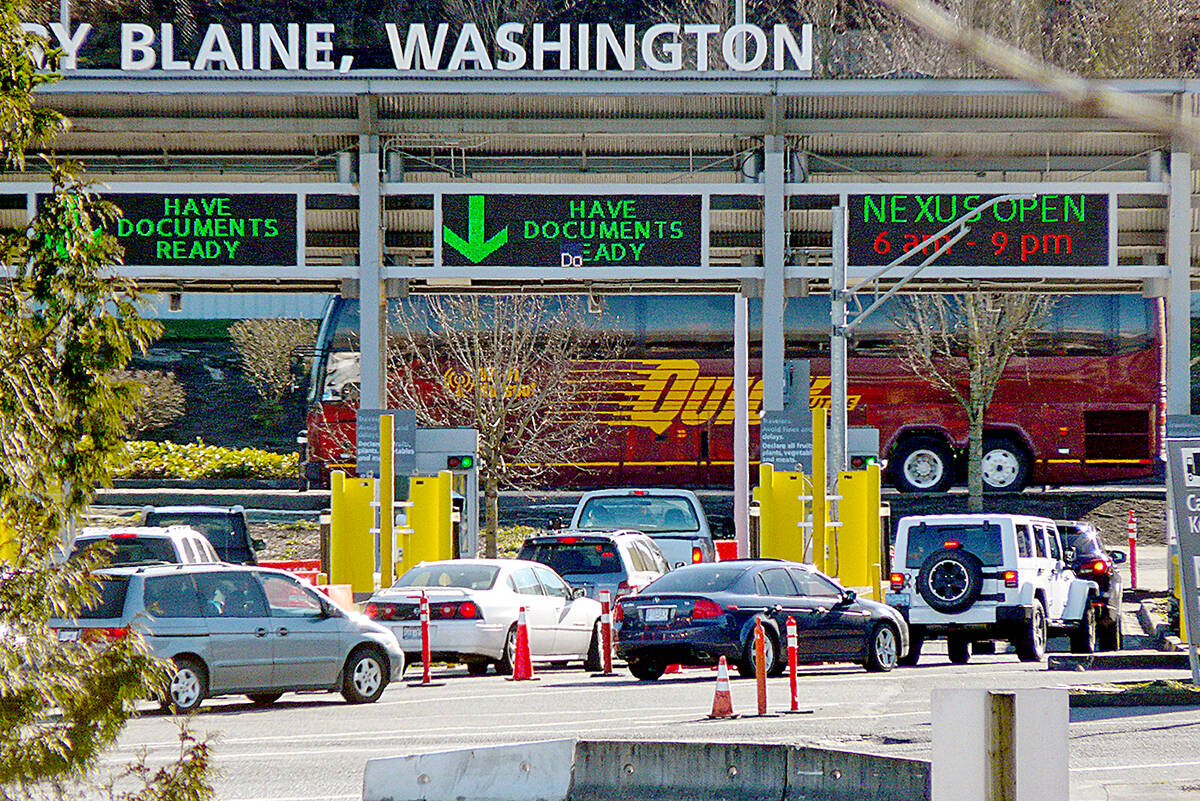U.S. border officials are crediting facial-recognition technology with stopping an impostor from entering their country through the Pacific Highway border in South Surrey.
According to a news release issued Friday (Dec. 3), officers using ‘Simplified Arrival’ – a touchless arrival process which compares facial biometrics on documents required for entry into the U.S. – identified a “facial mismatch” while processing a female bus passenger on Nov. 26.
The woman admitted to using her sister’s U.S. passport and COVID-19 vaccination card, “because she had not been vaccinated,” the release states.
“The addition of facial biometric technology and the vigilance of our CBP officers prevented the entry of someone suspected of fraudulently using another individual’s passport and COVID-19 vaccination card to cross international borders,” Brian J. Humphrey, U.S. Customs and Border Protection’s Seattle director of field operations, said in the release.
The biometric facial-comparison process occurs only at a time and place where travellers are already required by law to verify their identity by presenting a travel document, the release continues.
The Canada Border Services Agency began using it for NEXUS passengers at the Vancouver International Airport in November 2019, stating the system “better aligns with global trends for border processing.”
READ MORE: Facial scans kick in for NEXUS passengers at YVR
In the CBP release, it explains that when a traveller arrives at one of the pedestrian lanes or undergoes I-94 processing at the border, he or she will pause for a photo at the primary inspection point. An officer will then “review and query the travel document, which will retrieve the traveler’s passport or visa photo from government holdings and compare it to the new photo.”
The process “only takes a few seconds and is more than 98 percent accurate,” according to the release.
“In addition, foreign travelers who have travelled to the United States previously may no longer need to provide fingerprints, as their identity will be confirmed through the touchless facial biometric process.”
The release notes that as part of security safeguards, the CBP limits the amount of personally identifiable information used in the process. As well, new photo comparisons of U.S. citizens are deleted within 12 hours.
Photo comparisons of most foreign nationals will be stored in a secure U.S. Department of Homeland Security system, the release adds.
U.S. travellers and foreign nationals who are not required to provide biometrics and wish to opt out of the new biometric process may notify a CBP officer as they approach the primary inspection point, the release continues. These travellers will be required to present a valid travel document for inspection by a CBP officer and will be processed consistent with established processes for crossing into the States.
To date, more than 113 million travelers have participated in the biometric facial comparison process at air, land, and seaports of entry. Since September 2018, CBP has leveraged facial biometrics to prevent more than 1,100 impostors from illegally entering the United States by using genuine travel documents that were issued to other people.
tholmes@peacearchnews.com
Like us on Facebook and follow us on Twitter
www.peacearchnews.com/newsletters

